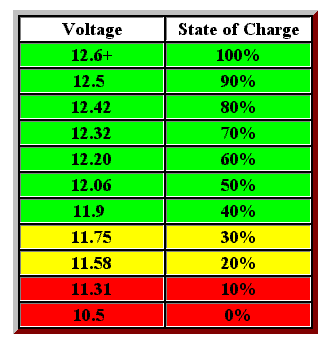versicolor
Member
- Joined
- Apr 6, 2015
- Posts
- 11
Hi all,
I am planning a trip this year, and would like to do lots of dry camping.
I'm rethinking the power situation in the camper. Currently, it's got an old deep cycle battery.
I would like to replace the battery with two 6v T-105's.
The question is, I have always just camped until the lights & fan start to get dim/slow.
Obviously, I need to take proper care of the nice new batteries, and I've heard I shouldn't run them below 50% depth of discharge.
So, how do I tell the DOD %?
Out of curiosity, does the lights running dim mean it reached 0%?
I can install a voltmeter, but it seems to be super inaccurate due to activity.
Thanks
I am planning a trip this year, and would like to do lots of dry camping.
I'm rethinking the power situation in the camper. Currently, it's got an old deep cycle battery.
I would like to replace the battery with two 6v T-105's.
The question is, I have always just camped until the lights & fan start to get dim/slow.
Obviously, I need to take proper care of the nice new batteries, and I've heard I shouldn't run them below 50% depth of discharge.
So, how do I tell the DOD %?
Out of curiosity, does the lights running dim mean it reached 0%?
I can install a voltmeter, but it seems to be super inaccurate due to activity.
Thanks

